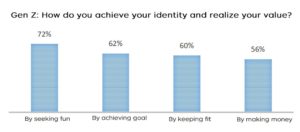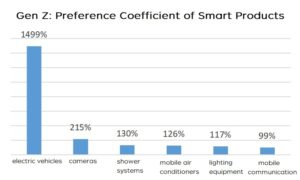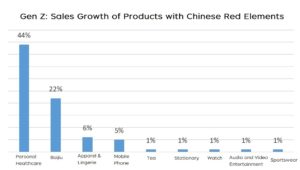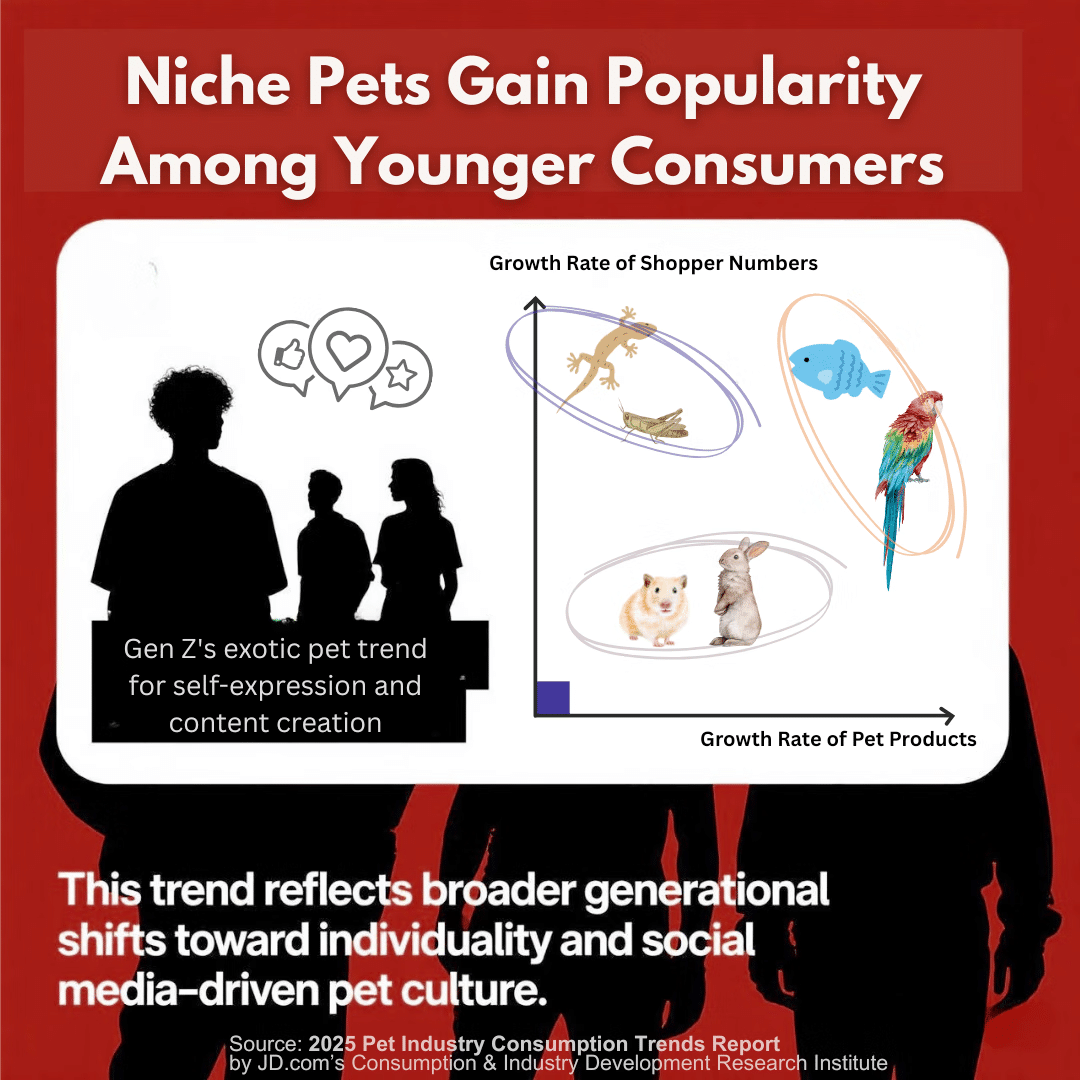Apr 29, 2022|
Gen Z’s Shopping Trends in China: Happiness First, Smart Products and More
by Doris Liu
Ahead of China’s Youth Day on May 4, JD has released a new report examining shopping preferences and trends related to Gen Z consumers, who now account for 19 percent of the country’s total population at 260 million , according to the National Statistics Bureau.
Often referred to as 95s (born after 1995), they are the latest to join the workforce, and will gain more purchasing power in the next decade.
Key findings from the report, released by JD Research Institute for Consumption and Industrial Development, show that this generation holds its own rational consumption ideas, looking to their peers for fashion trends while also holding clear personal preferences.
Top priority
As digital natives, Gen Z grew up with the rise of the Internet, instant messaging, smart devices and other technologies. On average they are well-educated and have more freedom to develop their personality, hobbies and make their own choices.
Gen Z has also witnessed China’s rapid economic development, leading to a boost of national confidence. At the same time, China’s further integration into globalization enabled Gen Z to have a global perspective, and are not only more diverse but are also willing to embrace diversity.
In such a context, Gen Z has developed unique values. Based on a survey released by Snapchat, 72 percent of Gen Z respondents, when answering the question “How do you achieve your identity and realize your value?”, chose “by seeking fun”; about 60 percent chose “by achieving a goal” and “by keeping fit”; and 56 percent “by making money”.

Consumption preferences
Good Looks Pay
The consumption upgrade of Gen Z in recent years has escalated from product quality to spiritual satisfaction, meaning that the external look of a product is a crucial part in terms of its market competitiveness.
Since 2022, sales of visually appealing products purchased by Gen Z have increased by 166 percent year-on-year (YOY). In the categories of kitchen and bathroom appliances, home renovation and soft furnishings, baby bedding, outdoor equipment and apparel, sales of products with eye-catching appearance have all increased by more than 10 times.
Smarter is Better
Gen Z shows the highest preference for smart products, with 70 percent higher in preference coefficient compared to the other age groups, which not only promotes industrial upgrading, but also adds momentum to technological innovation.
Smart products of electric vehicles, cameras, shower systems, mobile air conditioners and lighting equipment have preference coefficients close to or higher than 100 percent.

Low-sugar matters
According to the “Generation Z Beverage Consumption Survey Report” released by the Shanghai Consumer Council earlier this year, 41 percent of Gen Z in Shanghai chose beverages with “0 sugar” and 38 percent chose “70 percent off sugar”. Less than 20 percent of Gen Z chose “full sugar” or “30 percent off sugar”.
Besides beverages, the low-sugar trend has expanded to various categories. JD’s data showed that low-sugar products of tea drinks, beer, condiments, vitamin and mineral supplements went up 20 times YOY and low-sugar pharmaceuticals saw an uptake of 14 times YOY.
The Wellness Generation
Gen Z is dedicated to their health and wellness, leading to a rise in consumption in the industries of health care, beauty and anti-aging products among young people.
Wellness consumption has developed into a lifestyle for Gen Z. Sales on JD.com in 2022 showed that health management products have increased nearly 20 times YOY, and health drinks, Chinese medicine services and psychological counseling services have rose more than three times YOY. At the same time, nutritional products such as astaxanthin, seal oil and collagen chondroitin went up by more than 10 times YOY.
Trends for “Guochao”
Guochao, Mandarin for homegrown fashion, gained popularity. The number of “Chinese Style” (国风) enthusiasts exceeded 177 million in 2021, in which the group aged 18-30 accounted for about 70 percent, said a report by Chinese online video site Bilibili Inc.
Red is an auspicious color in Chinese culture. JD’s data showed that Gen Z’s purchase of products with the phrase “Chinese red” included in the product names surged 326 percent in 2022, with personal care and health, and baijiiu, China’s liquor, being the highest-selling categories.

The Lazy Economy
Gen Z is busier with increasing personal disposable income, thus becoming the main demographic of the convenience-based “lazy economy”. They frequently use delivery services and door-to-door services, according to QuestMobile.
Sales of ready meals and vacuum mop combos purchased by Gen Z on JD.com this year have increased by 200 percent and 142 percent respectively, with underwear washing machines up almost 20 times.
The shopping preferences of Gen Z, which used to be considered special and different a few years ago, have become the mainstream of the market today. These digital natives are considered the voice of the internet, and as a result, brands are adjusting product designs, functions, services and marketing methods especially for them. In other words, Gen Z is creating trends, but also guiding the whole consumer market, energizing the process of consumption and upgrading.





 This Harbin tourism boom has also spurred a surge in sales of winter apparel. JD.com’s data indicates a rapid growth in the sales of warm clothing items such as down jackets, snow boots, and thermal underwear between January 1st and 7th. The sales growth is especially pronounced in southern provinces and cities such as Jiangsu, Zhejiang, Guangdong, Sichuan, and Shanghai. Notably, tall snow boots registered a 206% year-on-year increase in transactions, while padded cotton caps and thickened long down jackets soared by 158% and 134%, respectively. Beyond clothing, travel gear has also seen a considerable uptick, with a 98% year-on-year growth in transactions for large suitcases and travel backpacks in these southern regions.
This Harbin tourism boom has also spurred a surge in sales of winter apparel. JD.com’s data indicates a rapid growth in the sales of warm clothing items such as down jackets, snow boots, and thermal underwear between January 1st and 7th. The sales growth is especially pronounced in southern provinces and cities such as Jiangsu, Zhejiang, Guangdong, Sichuan, and Shanghai. Notably, tall snow boots registered a 206% year-on-year increase in transactions, while padded cotton caps and thickened long down jackets soared by 158% and 134%, respectively. Beyond clothing, travel gear has also seen a considerable uptick, with a 98% year-on-year growth in transactions for large suitcases and travel backpacks in these southern regions. JD’s Data: Highlights of Third-Party Merchants’ Growth on JD.com
JD’s Data: Highlights of Third-Party Merchants’ Growth on JD.com



